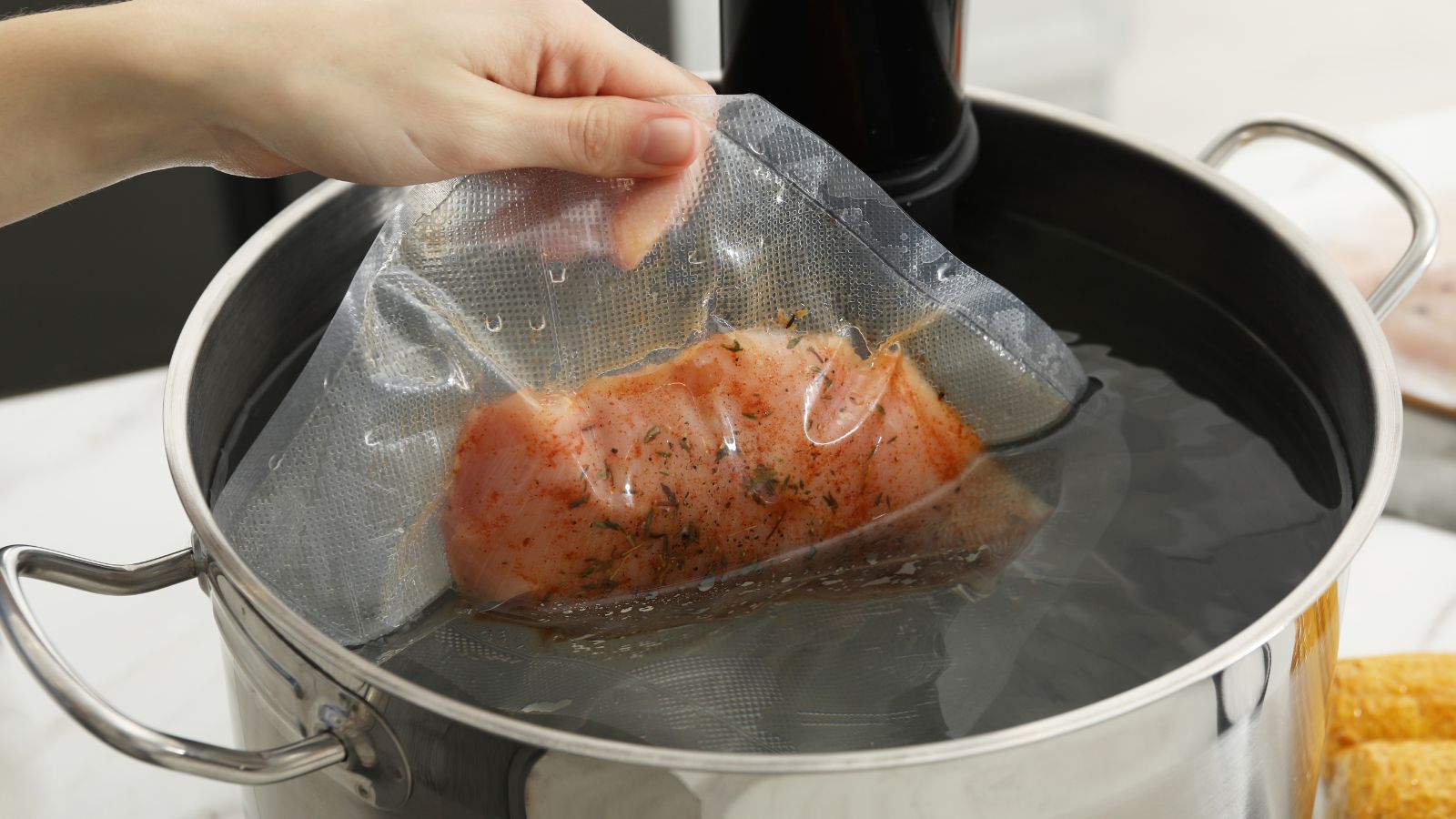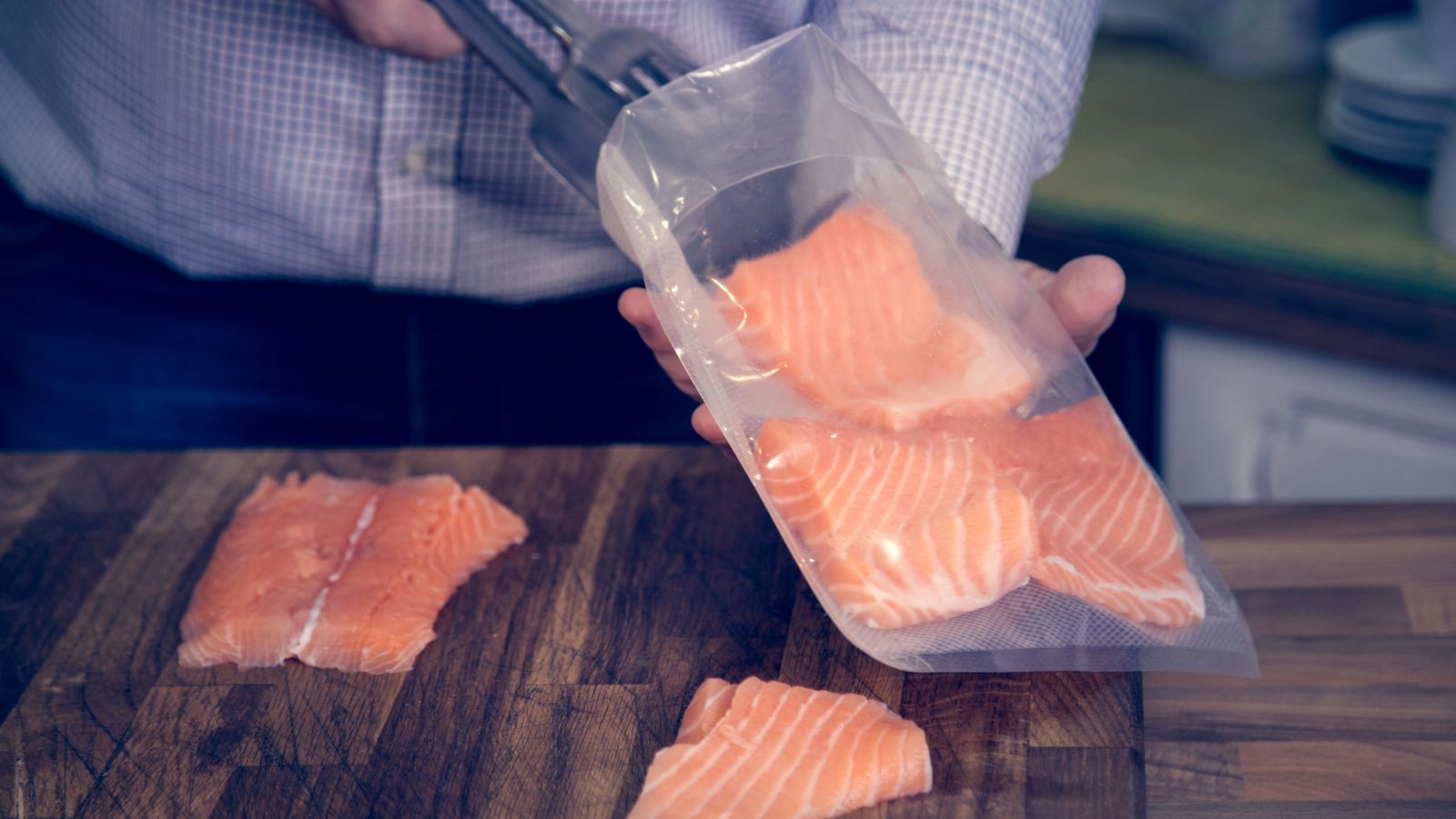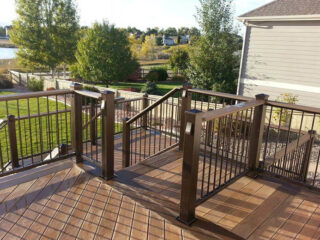
When chefs plan a new menu, they chase a balance of bold flavor, consistent execution, and operational efficiency. These goals often compete. A dish that dazzles in testing may fall short during a dinner rush. A lean kitchen crew may not have the bandwidth to plate with the same finesse day after day. That’s where sous vide products come in. This precise cooking method gives chefs a reliable way to produce consistently excellent results, even under pressure. With sous vide, proteins stay juicy, vegetables retain their structure, and sauces develop deeper flavor. The process also reduces stress in the kitchen by cutting prep time and minimizing waste. Chefs can spend less time correcting mistakes and more time refining technique. For restaurant owners and culinary teams building or revamping a menu, sous vide isn’t just helpful – it’s a strategic advantage. It’s the secret behind many of today’s most successful and scalable kitchens.
Sous vide, which means “under vacuum” in French, refers to cooking food in a sealed pouch immersed in a precisely heated water bath. Unlike grilling or pan-searing, sous vide keeps the temperature stable for the entire cooking process. The result is food that’s evenly cooked, juicy, and packed with flavor. It’s not just a technique. It’s a tool that lets chefs rethink what’s possible.
Do restaurants use sous vide? Why do so many professional kitchens use sous vide products as a foundation for their menus? For one, consistency matters. In the restaurant business, inconsistency kills reputations. With sous vide, steaks come out medium rare every time. Chicken breasts stay tender. Vegetables maintain their snap and color. That kind of control is hard to find with traditional methods – especially when cooking at scale.
Sous vide products also reduce prep time. Instead of relying on line cooks to cook proteins from scratch, chefs can use sous vide items that are pre-cooked to exact specifications. All that’s needed is a quick finish – like a sear, grill, or sauce. That means less stress on the line and fewer mistakes during peak hours. It also opens the door for more complex dishes that would otherwise be too risky or labor-intensive.
Think about a sous vide duck confit. Traditionally, this dish requires hours of careful preparation. With sous vide, chefs can prepare it in advance, store it safely, and plate it on demand. The same applies to eggs cooked at precisely 63°C, or custards with an ultra-smooth texture. These aren’t just menu items – they’re experiences made possible by precision.
The efficiency benefits go beyond labor. Sous vide reduces food waste. Proteins don’t shrink as they cook, which preserves both yield and texture. Because food is sealed in vacuum pouches, shelf life improves. Restaurants can prep in bulk and avoid tossing spoiled or overcooked inventory. The financial upside is clear – less waste, more portions, higher margins.
Another advantage? Flexibility. Sous vide products allow chefs to test new ideas without overhauling the kitchen. Want to launch a brunch service with perfectly cooked eggs and thick-cut bacon? Looking to offer vegan specials with sous vide carrots or tofu? With the right supplier, it’s easy to test these concepts without training staff from scratch or investing in new equipment.
Sous vide also supports dietary and allergy concerns. With vacuum-sealed bags and separate cooking vessels, chefs reduce cross-contamination risks. That makes it easier to cater to gluten-free, dairy-free, or low-sodium diners. It’s precision with purpose.
When designing a new menu, balance is key. Chefs want signature dishes that wow guests, but they also need items that can be executed quickly and consistently. Sous vide helps bridge that gap. It’s not just about simplifying. It’s about making excellence scalable.
Many restaurants now partner with a sous vide company like Cuisine Solutions to make the process even easier. Their chefs specialize in developing fully cooked restaurantsous vide products that meet exacting standards. These offerings allow restaurants to integrate high-quality items into their menu without starting from scratch. Whether it’s tender short ribs, plant-based options, or complex sauces, the team at Cuisine Solutions brings expertise and consistency to every order. This kind of collaboration allows restaurants to evolve their menus while keeping labor and quality in check.
Using sous vide products doesn’t mean giving up creativity. It means freeing up bandwidth to focus on other elements of the dish – plating, sauce work, finishing techniques. When prep is under control, there’s more room to innovate. For many chefs, that’s where the real artistry begins.
So how should restaurant owners approach sous vide when launching a new menu? Start with the core. Identify your protein anchors and consider how sous vide can improve consistency. Test plant-based or allergen-friendly items that can expand your reach. Work with a partner who understands your vision and can deliver high-quality products tailored to your kitchen’s needs.
The decision to use sous vide isn’t just about technique – it’s about strategy. It’s about choosing a smarter way to run a kitchen, satisfy guests, and stay profitable in a competitive market. The benefits speak for themselves: better food, lower labor costs, faster service, and fewer returns.
Every menu tells a story. The right tools help you tell it with clarity, confidence, and consistency. Sous vide products give chefs more than precision – they give them control. In a time when diners expect quality and speed, this matters. It’s not just about cooking food. It’s about protecting your brand, building loyalty, and staying profitable. When you remove guesswork from the kitchen, you make space for creativity. You also reduce burnout, avoid waste, and serve food that earns repeat visits. That’s what sous vide delivers. It turns your vision into something reliable – plate after plate, night after night. Whether you’re launching a new concept or refining a legacy menu, investing in sous vide may be the smartest move you make this year. The question isn’t whether you can afford to try it. The question is – can you afford not to? Your kitchen deserves the edge. Your customers will taste the difference.







